There are more than 1,000 vegetable species in the world — an astounding number, really, considering many of us don’t consume more than the basics in our lifetime. Things like carrots, potatoes, tomatoes, peas, and broccoli aren’t unusual to see on American plates, but with hundreds more options, that’s barely scratching the surface.
Within the realm of vegetables, there are more than 20 that start with the letter “E.” We bet some of these you have eaten recently, while there are likely some you may have never heard about. Read on to learn about these veggies that start with “E” and then challenge yourself to source out an option or two you may have never tried.
1. Earthnut Peas
An ancient perennial plant that grows in Europe and West Asia, earthnut peas are our first pick on this list of vegetables that start with E. They belong to the same family as green beans, French beans, and fava beans. The plant has sweet-smelling flowers and edible tubers, and the peas can be boiled or roasted — their flavor is comparable to chestnuts.

Earthnut peas can be boiled or roasted and have a fine, nutty aroma.
©Vankich1/Shutterstock.com
2. Edamame Beans
The earliest records of soybean cultivation date back to over 7,000 years ago in China. Essentially an immature soybean, edamame can be boiled or steamed, and they’re often enjoyed with a dash of salt. They are rich in folic acid and compounds that bolster the immune system.
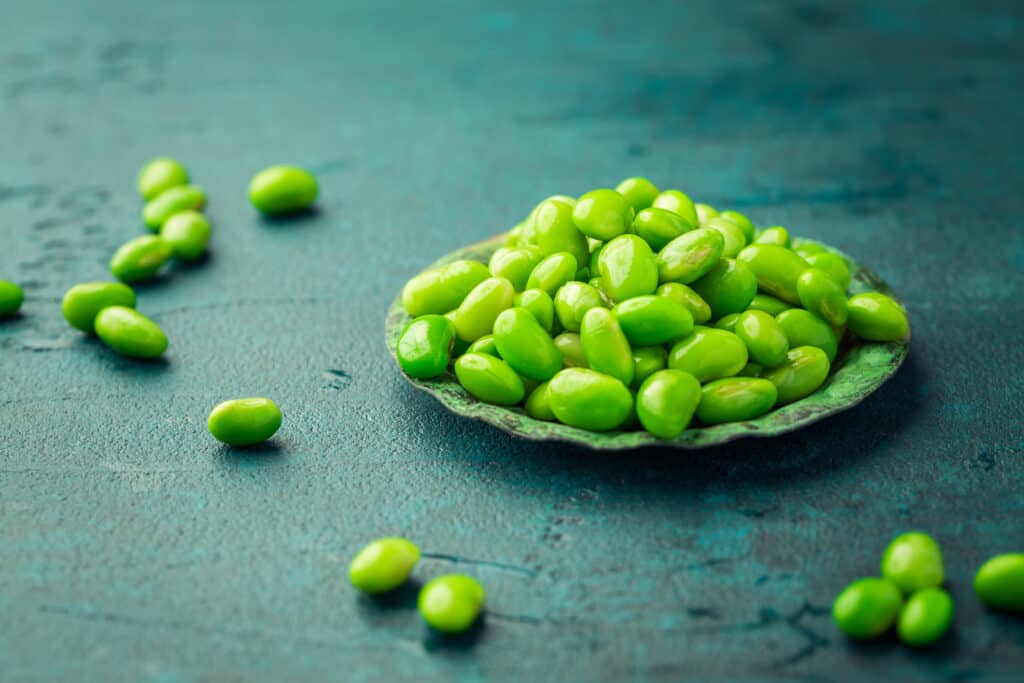
A great zero-cholesterol snack, edamame beans provide protein, iron, and calcium.
©iStock.com/brebca
3. Ethiopian Mustard
Ethiopian mustard is a mild-flavored leafy vegetable. It has thick, dark green leaves and bright yellow flowers. Although it originates in Ethiopia, the vegetable now grows in parts of Europe and the United States. The leaves, stalks, and seeds of Ethiopian mustard are all edible. To consume this vegetable, boil the leaves and stalks in salted water.
4. Elephant Foot Yam
Elephant foot yam, also known as Kanda, is a carb- and protein-rich vegetable. Predominantly present in Africa and parts of South and Southeast Asia, it’s a popular ingredient in curries, and people use the greens and stems in cooking. Several traditional Indian medicine systems use elephant foot yam for medicinal purposes — it is effective in piles treatment.
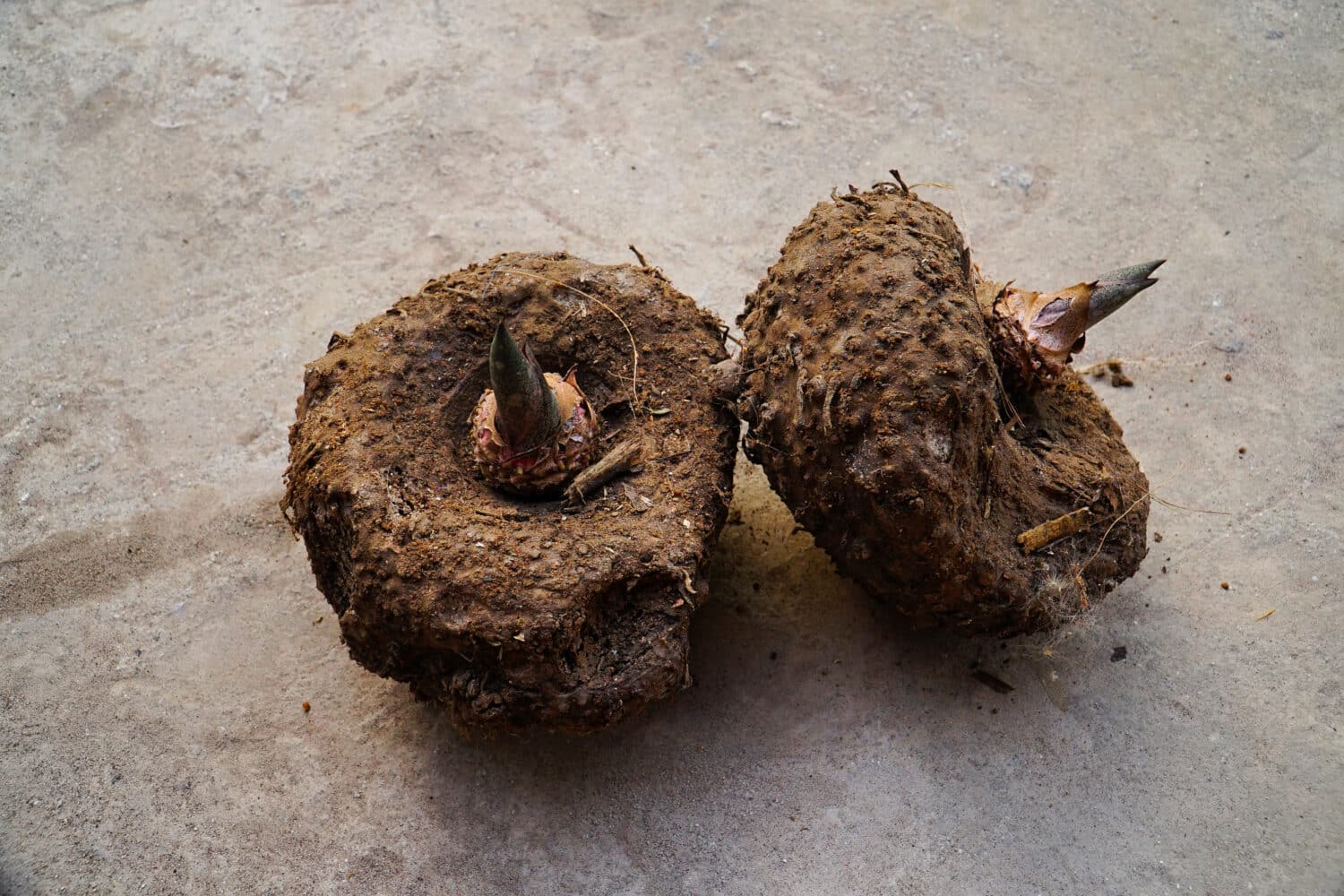
A tropical tuber crop, elephant foot yam grows primarily in
Africa
and parts of South and Southeast Asia.
©VISHNU T M/Shutterstock.com
5. Eggplant
Eggplant is a purple vegetable native to India and a member of the nightshade family, which includes potatoes, peppers, and tomatoes. It is one of the more popular vegetables that start with E. Eggplant is an excellent source of vitamin C and dietary fiber and also contains vitamin B6, potassium, and folate. It is usually grilled, roasted, or fried.
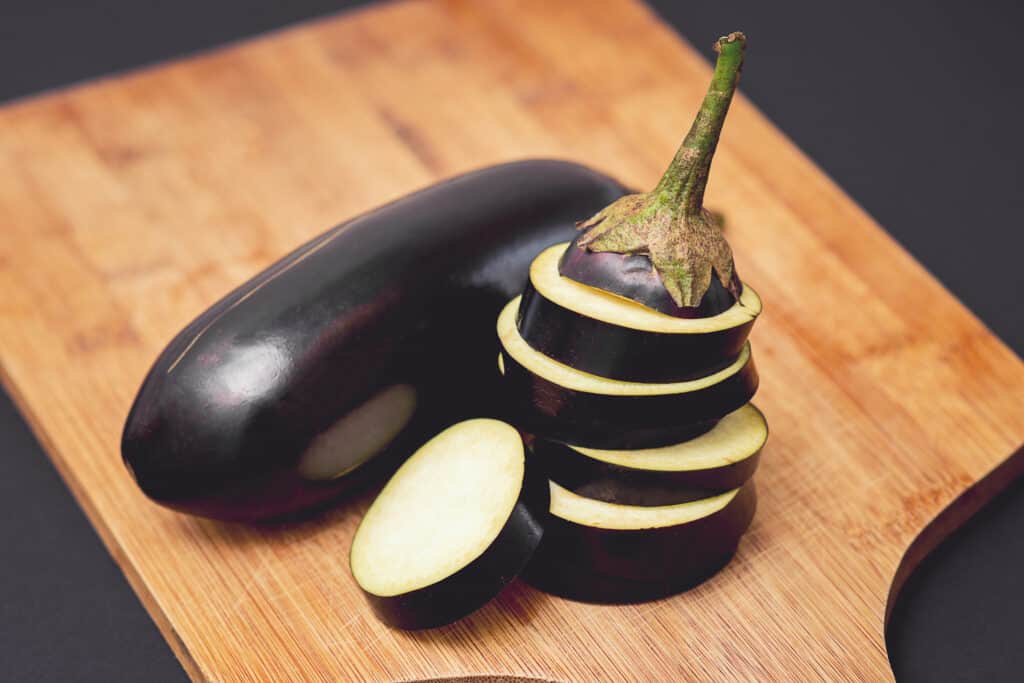
The Chinese were the first to grow eggplants in a systematic way during the 5th century BC.
©iStock.com/okskukuruza
6. Elephant Garlic
Elephant garlic originated in the Eastern Mediterranean, but immigrants brought it to the United States. It gets its name from its massive size, with the ability to grow up to almost 6 inches in diameter! Interestingly, it is more closely related to leeks than garlic.
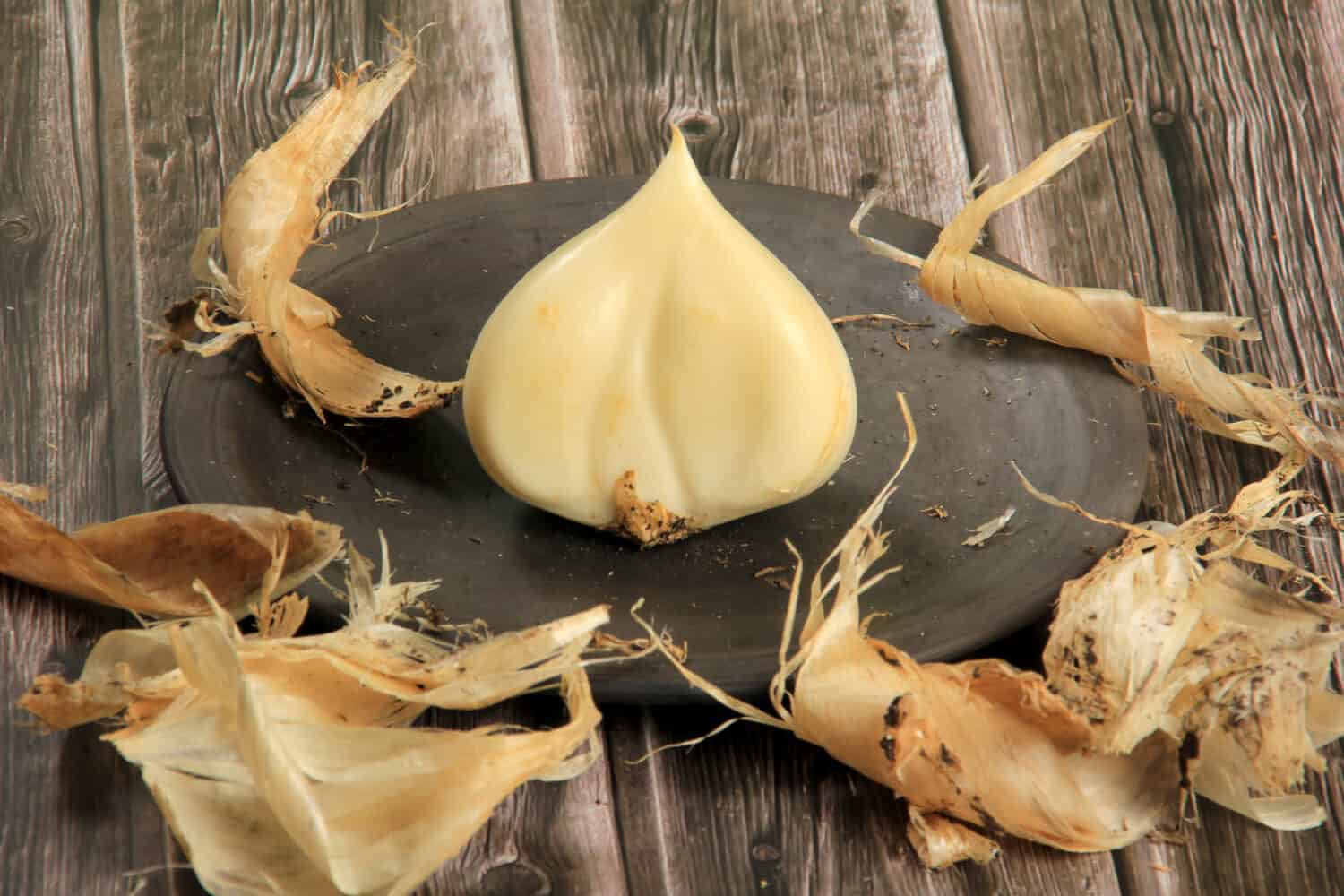
Roasting, baking or grilling enhances the flavor of elephant garlic.
©SHARKY PHOTOGRAPHY/Shutterstock.com
7. Endive
A small, leafy, short-stemmed herb from the chicory family, endive looks like a tiny bunch of romaine lettuce and is bitter in taste. Endive is rich in folate, high in dietary fiber, and a good source of vitamins B, C, and K as well as minerals.

Endive is typically eaten raw.
©Brent Hofacker/Shutterstock.com
8. Eddo
A tropical root vegetable with edible stems, people eat eddo in tropical areas around the world, mainly in the West Indies and South America. The vegetable has a mild flavor and starchy texture and must be prepared well or can taste acrid. You can consume eddo raw, but tastes better when cooked.

Eddo is an excellent source of fiber and carbs.
©komkrit Preechachanwate/Shutterstock.com
9. Escarole
Escarole, like endive, is part of the chicory family with curly, broad, green leaves and a bitter taste that gets mellower when cooked. To enjoy escarole, use it in pasta and soups. Escarole is a good source of vitamins A and K; its fiber supports digestive health and can help regulate blood sugar levels.

Escarole’s broad leaves have crumpled, jagged edges that distinguish it from butterhead lettuce.
©Brent Hofacker/Shutterstock.com
10. Elephant Ears
Elephant ears are a type of tropical plant with large leaves. Its stalk, however, is considered a vegetable. Sometimes called taro, this starchy root vegetable is native to Southeast Asia and is a good source of carbohydrates, vitamin C, and dietary fiber, and it is low in fat and calories. Enjoy it boiled, fried, or steamed. Use it in stews, soups, and curries, or mash it and use it as a thickening agent.
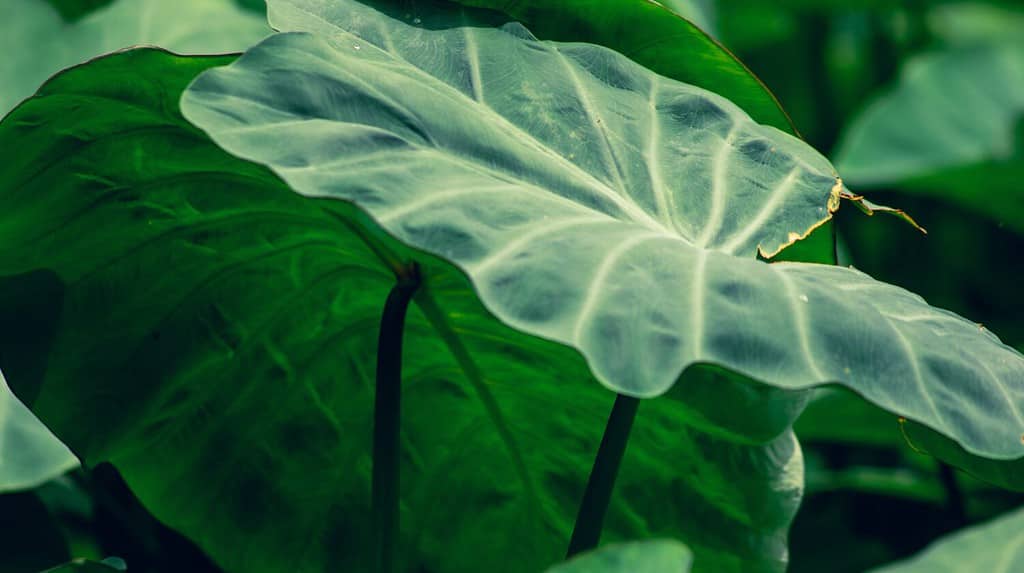
The elephant ear plant can grow up to 8 feet tall.
©kasbar kasbar/Shutterstock.com
11. English Peas
English peas are a popular vegetable. Also called garden peas or shelling peas, this legume is native to Europe and Asia. Available fresh, frozen, or canned, they are rich in protein, fiber, and vitamins A and C. When buying fresh peas, remember to choose firm, green, and plump pods without discoloration or signs of mold.
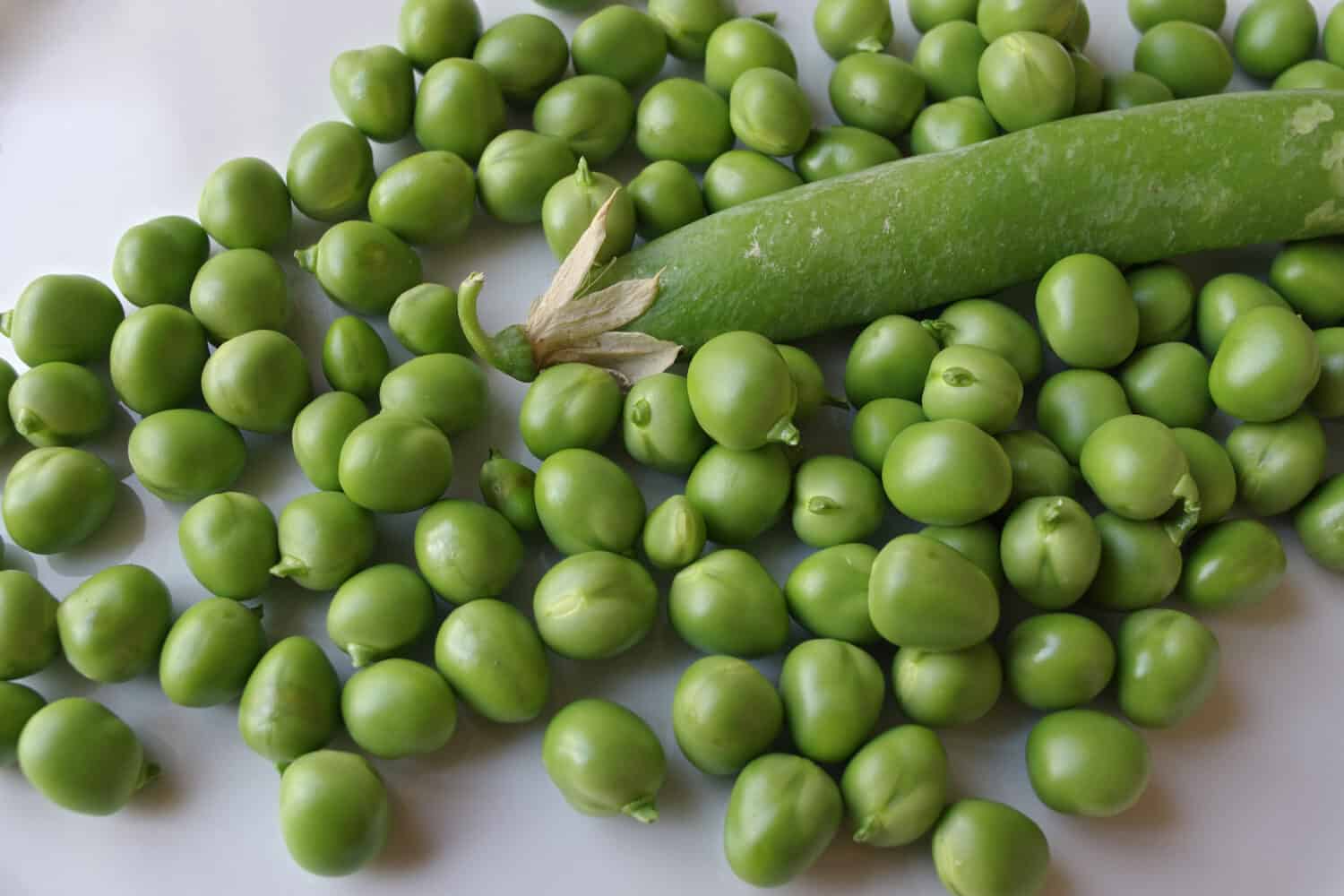
Green peas grow on vines.
©Angel DiBilio/Shutterstock.com
12. Espelette Peppers
Espelette pepper, or Piment d’Espelette, is a chili pepper from the French commune of Espelette. The pepper is small, about 1 inch in diameter, round, red, and mildly hot. They measure up to 4,000 Scoville Heat Units.
Espelette peppers are dried and crushed into a fine, bright red powder with a mild, fruity flavor with just a hint of heat. Popular in Basque cuisine, the pepper can be used in a range of dishes, including stews, soups, and meats. It’s also used in sauces and to make vinaigrettes and rubs.
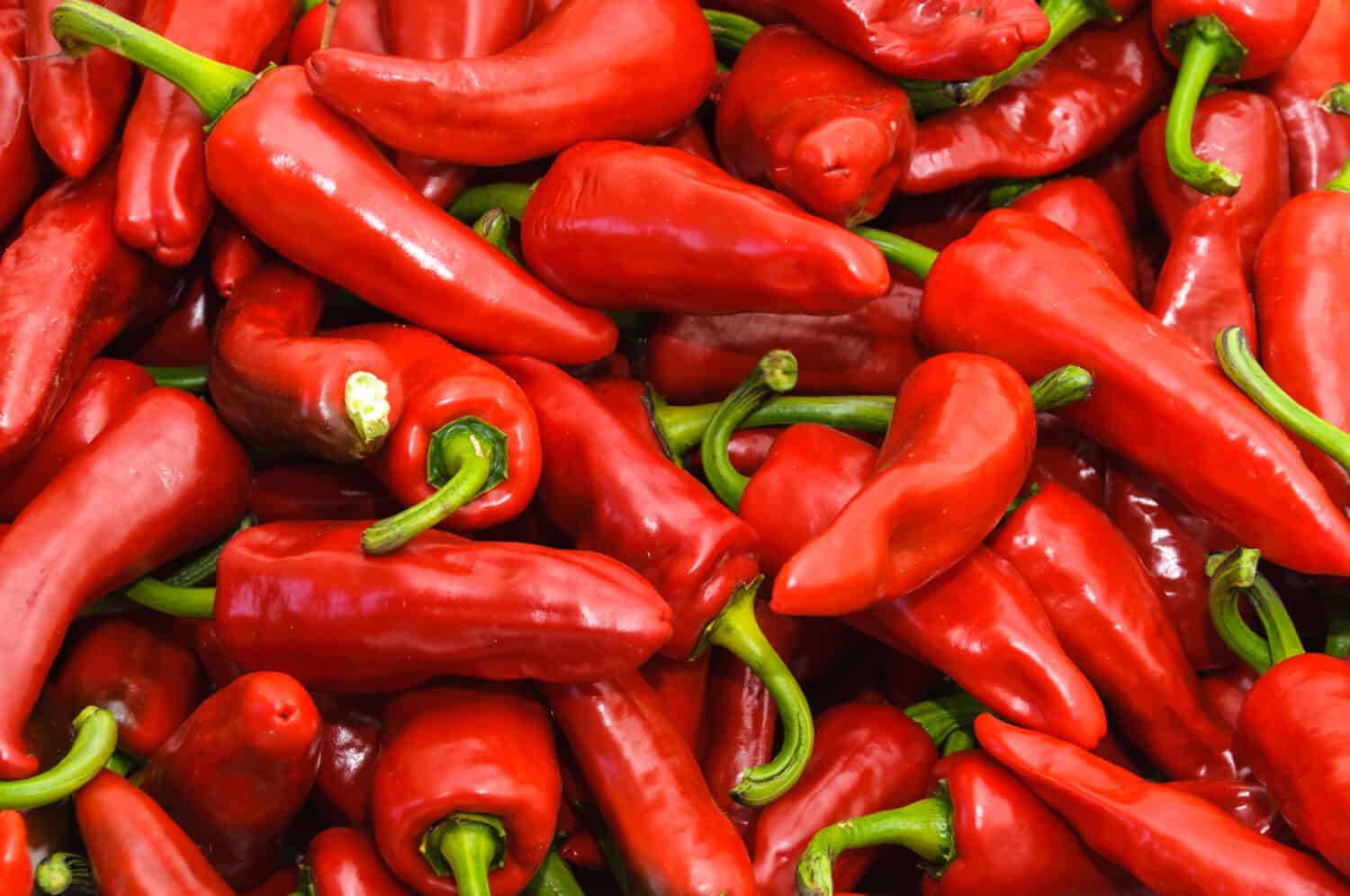
These peppers provide a mild heat, averaging 500 to 4,000 SHU on the Scoville scale.
©Thomas Dutour/Shutterstock.com
13. Ethiopian Kale
Ethiopian kale is a green leafy vegetable commonly known as collard or mustard greens. Native to the African nation, it’s a member of the cabbage family. Ethiopian kale has a slightly bitter flavor, milder than kale. It is a rich source of vitamins A, C, and K, dietary fiber, and calcium. You can cook Ethiopian kale or eat it raw.
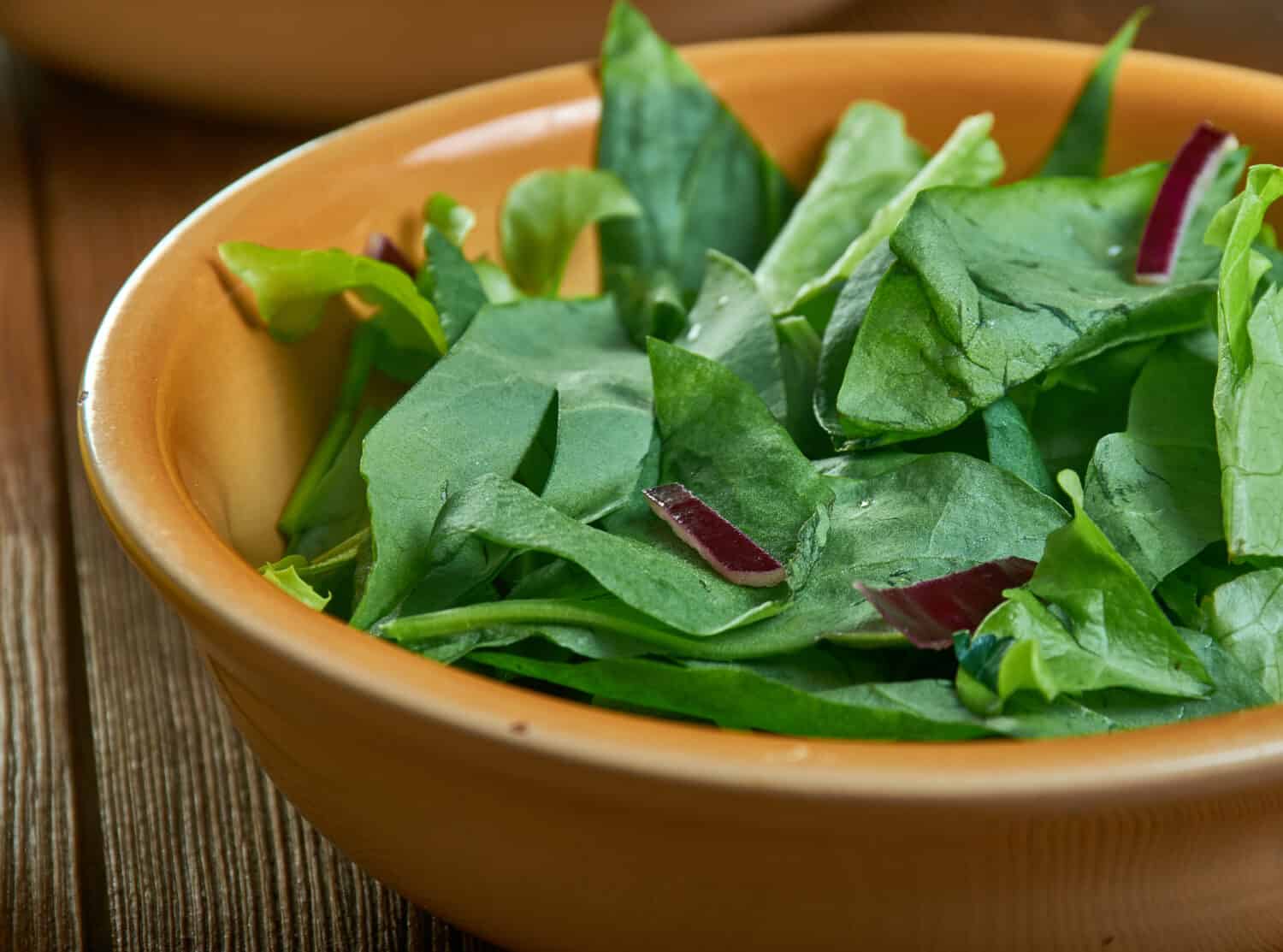
This vegetable originated in Ethiopia as early as 4000 B.C.
©Fanfo/Shutterstock.com
14. English Spinach
English spinach is an herbaceous plant that belongs to the Chenopodiaceae family. It grows in regions with temperate climates. It is delicious eaten raw but can also be blanched, served with butter on the side, or in omelets, frittatas, or pies.
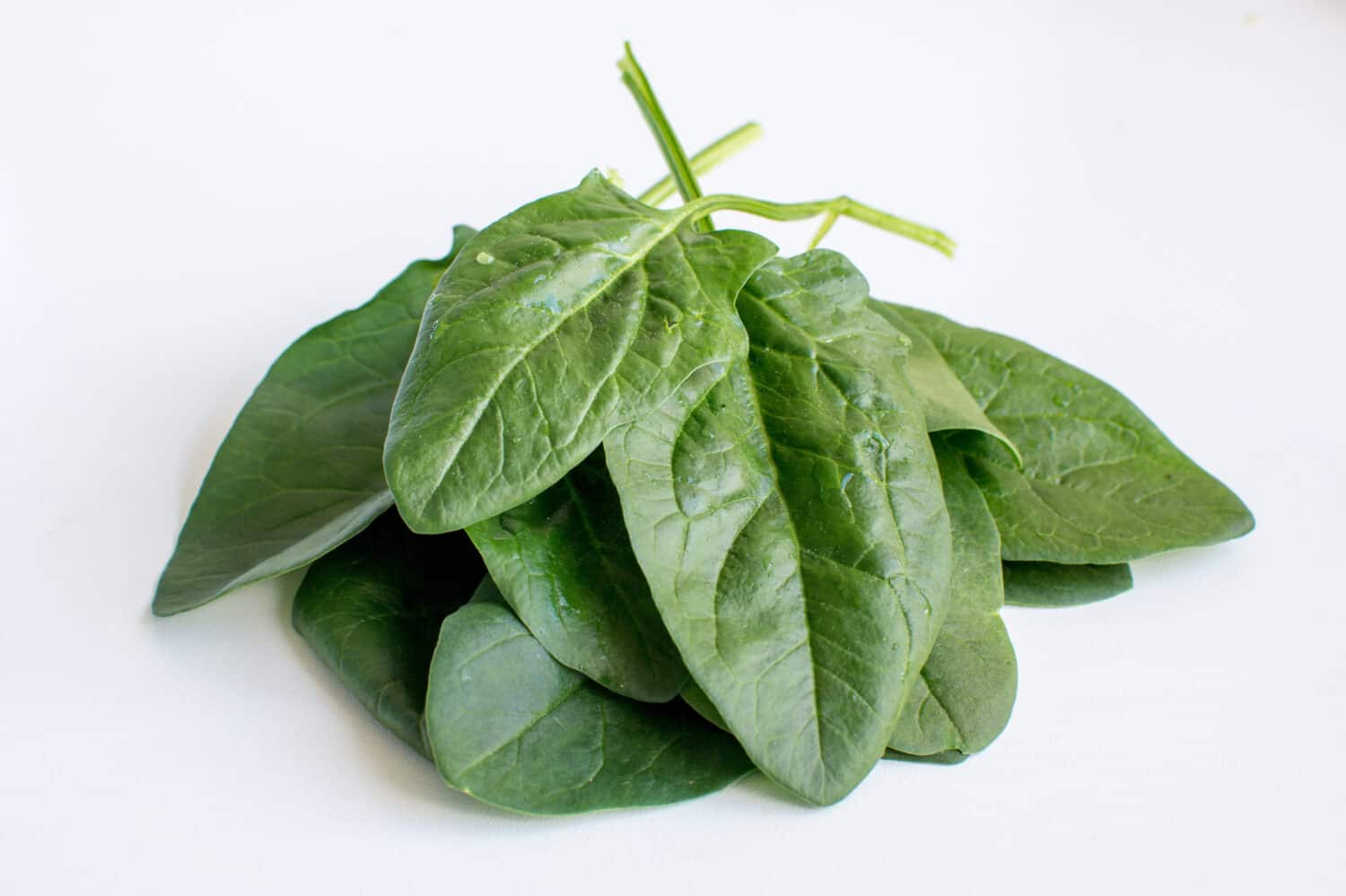
Also called true spinach, English spinach is often confused with silverbeet.
©Loralya/Shutterstock.com
15. Eelgrass
Eelgrass, also called wild celery or tape grass, is a kind of seagrass that grows in coastal waters. This submerged aquatic plant grows in estuaries and coastal areas and is food for animals like ducks, geese and sea urchins. In Asia, it is food for humans, too — people boil or roast it. Eelgrass is rich in protein and vitamins A and C.
Unfortunately, due to pollution and overharvesting, many eelgrass populations are declining.

Eelgrass stems have a sweet, crisp taste. The leaves may have attached herring spawn, which is also edible.
©Damsea/Shutterstock.com
16. Evergreen Onion
Evergreen onion, also called ramps or wild leeks, is a wild onion native to the Eastern United States and Canada. Harvested in springtime, evergreen onion has a pungent odor similar to garlic and a mildly sweet onion-like flavor. Rich in vitamins C and K as well as folate, it’s also a good source of antioxidants and has several beneficial immunity-boosting compounds that support overall health.
You can consume raw and cooked evergreen onions in sandwiches, salads, soups, omelets, quiches, as garnishes, and more.
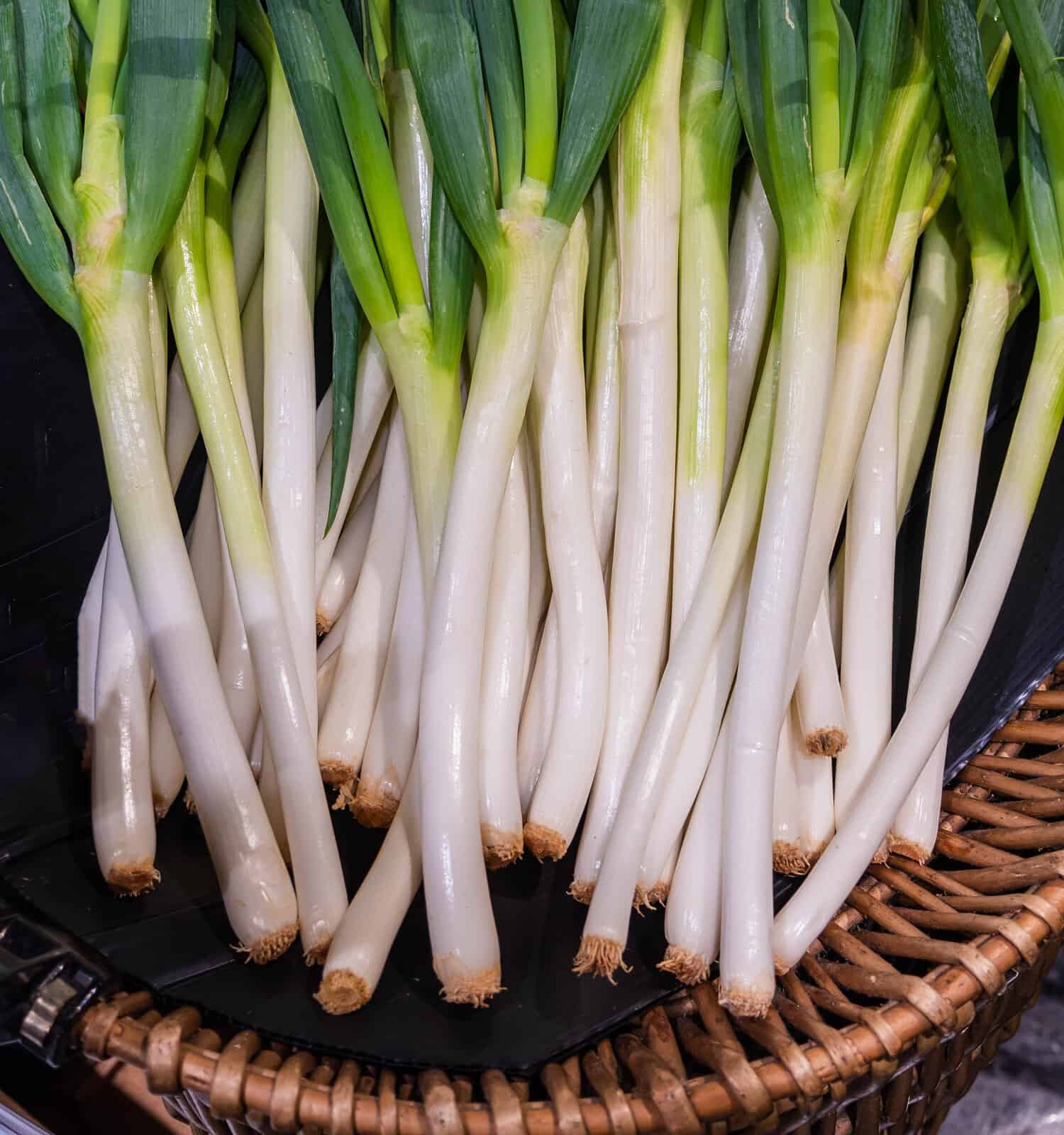
Crisp and tasty, evergreen onions grow and form new shoots throughout the growing season.
©TamuT/Shutterstock.com
17. Egyptian Onion
The Egyptian onion is a relative of the common onion and is a perennial bulb vegetable. Also called topset onion, its leaves are a popular substitute for green onions. Egyptian onions have a mild, sweet flavor and one can use them in stews, soups, and casseroles.
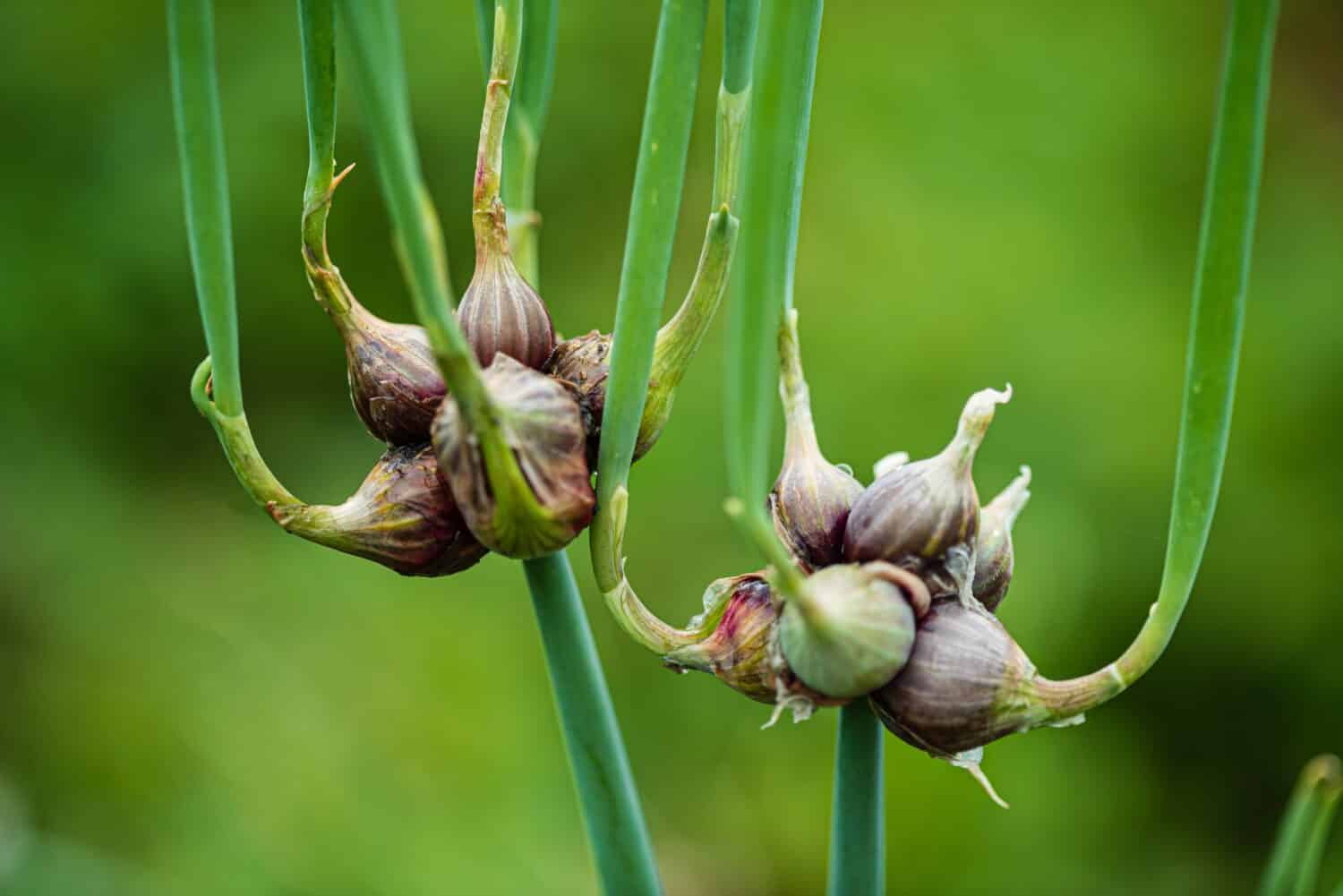
Egyptian onions are called “walking” onions because of the unique way the bulbs’ clusters bend down.
©Shebeko/Shutterstock.com
18. Eskimo potato
Eskimo potato, also called Alaska potato, is a small, knobby wild root vegetable that grows in North America’s Arctic regions. These potatoes have a white flesh and a nutty flavor, and it’s a staple food for people in the Arctic. This is one of the more obscure choices among the vegetables that start with E.
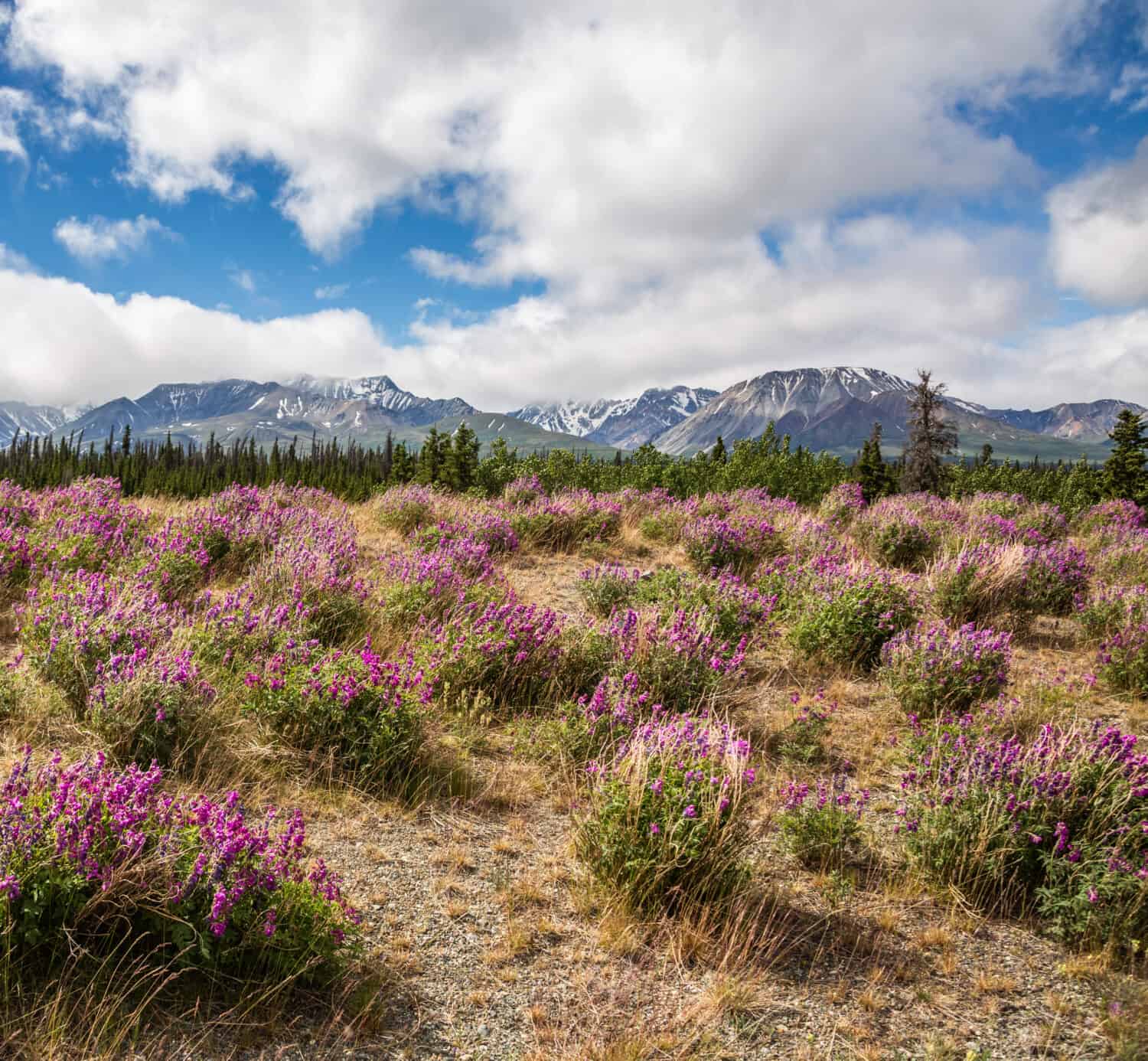
The Eskimo potato is high in starch and vitamin C.
©inEthos Design/Shutterstock.com
Other Vegetables That Start With E
- Estero salad
- Echinacea purpurea
- Echiveria
- Eryngium planum
- Epazote
- Eastern white pumpkin
- Elbow macaroni squash
- Elfin herb
There aren’t too many vegetables that start with E and some of the ones mentioned on the above list might be uncommon. While some of these are not generally considered vegetables, they are classified as such as per culinary use. Enjoy your culinary adventures with these tasty veggies
The photo featured at the top of this post is © pro ust/Shutterstock.com
Thank you for reading! Have some feedback for us? Contact the AZ Animals editorial team.







